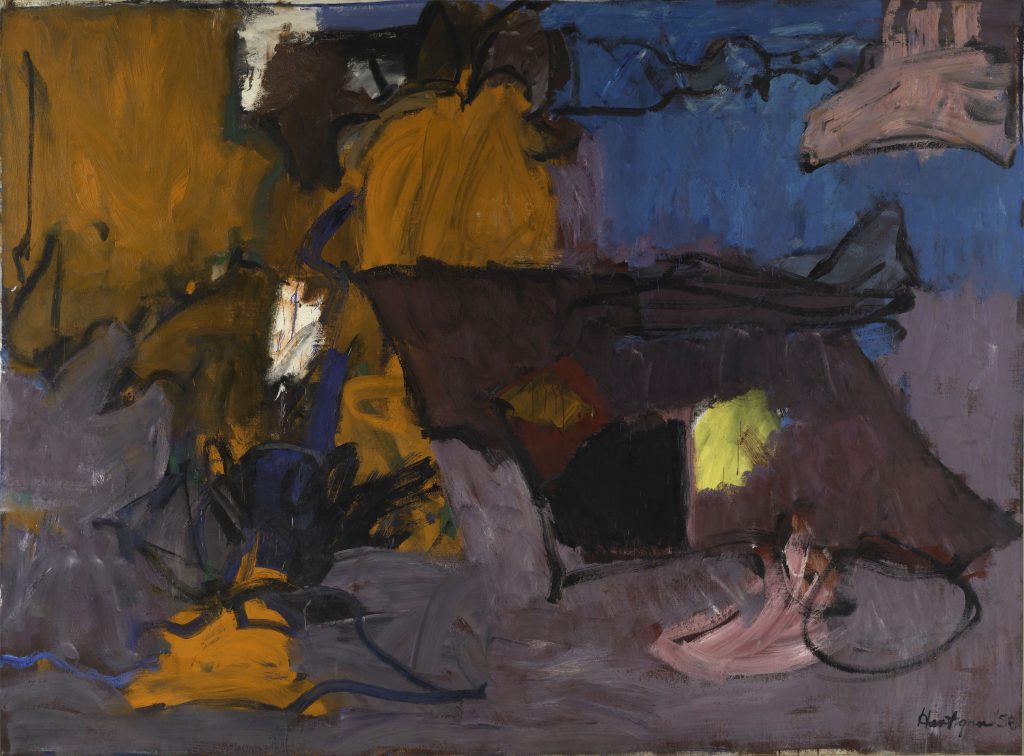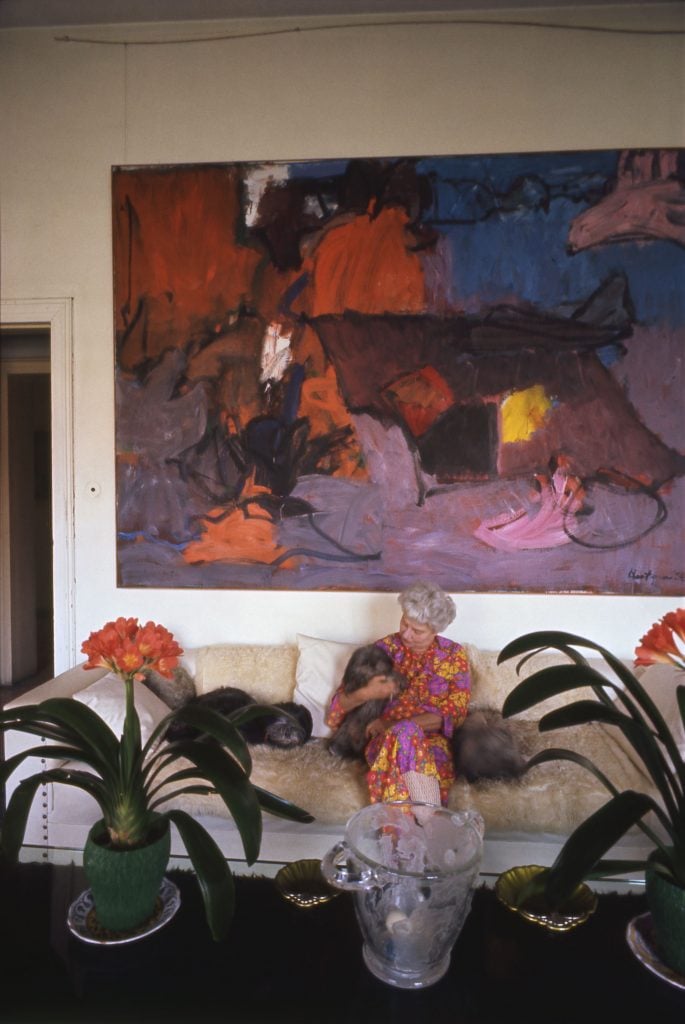Museums & Institutions
The Permanent Collection: Peggy Guggenheim’s Favorite Painting
Grace Hartigan's lush ode to Ireland occupied a prime spot on the great patron's walls.

Grace Hartigan's lush ode to Ireland occupied a prime spot on the great patron's walls.

Emily Steer

What artwork hangs across from Mona Lisa? What lies downstairs from Van Gogh’s Sunflowers? In “The Permanent Collection,” we journey to museums around the globe, illuminating hidden gems and sharing stories behind artworks that often lie beyond the spotlight.
This has always been one of my favorite works in the collection. Grace Hartigan is a fantastic artist who worked with abstraction in New York, but less is known about her than some of the other heavy hitters that we have in our collection. We have been exhibiting her with artists like Jackson Pollock and Clyfford Still, and she well and truly holds her own. In fact, she becomes my favorite painting in the entire room.
Peggy Guggenheim loved this painting. She would often exhibit it prominently on her living room wall. She visited Grace Hartigan’s studio in New York in 1959 and bought it directly from her studio. After she exhibited it in Venice, she wrote a letter to the artist and said how happy she was to show it in her home.

Peggy Guggenheim at home with Grace Hartigan’s Ireland (1958) hanging behind her. Photo: Ray Wilson.
Grace Hartigan was born in New Jersey, but her family originated from Ireland, which was so important to her. In 1958 she took her first trip to Europe and spent ample time in Ireland, visiting Dublin and beyond, and she became entranced by everything she saw. When she returned to her studio in the U.S., she painted a whole series of works dedicated to Ireland. This is the largest canvas of the entire series.
She always rejected the division between abstraction and representation. This work is inspired by the landscape, possibly of the city of Dublin and its surroundings, but it doesn’t directly represent that place. More than anything it evokes a sense of the place that inspired it and makes us feel how the artist must have felt. It’s going back to her memories, and her pondering those wonderful places that she saw.
There are quite a few earthy, subdued colors in it. There’s a possibility that they were inspired by the washed out colors of the city of Dublin; maybe the blues were inspired by the river Liffey. This tension between something that started realistic and becomes abstract and almost unrecognizable really inspires and surprises me every time I look at the work. It’s a big canvas, almost three meters in length, which becomes this immersive environment in which the viewer is standing. It’s extremely dynamic.
—Gražina Subelytė, associate curator Peggy Guggenheim Collection, Venice, as told to Emily Steer.